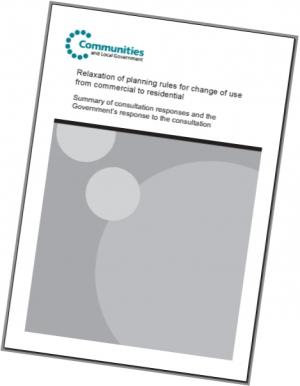



After last year's bold claims that removing the need for planning permission for conversion of commercial properties to residential could produce 260,000 extra dwellings, the government has now released its response to the consultation exercise on the issue and confirmed that it will progress the idea no further.
All that will be implemented is a change to the General Development Order which will allow the creation of up to 2 flats in existing A1 or A2 (Shop/Retail finance) premises without needing planning permission: the current permitted development rights only allow one addtional dwelling. This only applies to upper floors, so an element of commercial use must remain.
Anyone concerned with ensuring an adequate supply of affordable housing, of ensuring that Community Infrastructure Levy is derived from new development and of ensuring that housing is built to adequate standards in sustainable locations will be relieved that this ill-thought-out idea has been dropped. The government instead is relying on encouragement within the National Planning Polcy Framework to allow conversion where approopriate, a policy that seems much more appropriate than the original plans. The NPPF policy states that local planning authorities should
"... normally approve planning applications for change to residential use and any associated development from commercial buildings (currently in the B use classes) where there is an identified need for additional housing in that area, provided that there are not strong economic reasons why such development would be inappropriate."
The government's tardy release of its response to the consultation (which ended over a year ago on 30th June 2011) 3 months after the release of the NPPF shows that the Whitehall machinery is creaking under its load. Hardly surprising when CLG's Annual Report notes "The Department has restructured itself efficiently and fairly, reducing its workforce by 37% against the starting baseline."
[This story has been reproduced with minor changees from the Housing Enabling Network website with the permission of the author]
